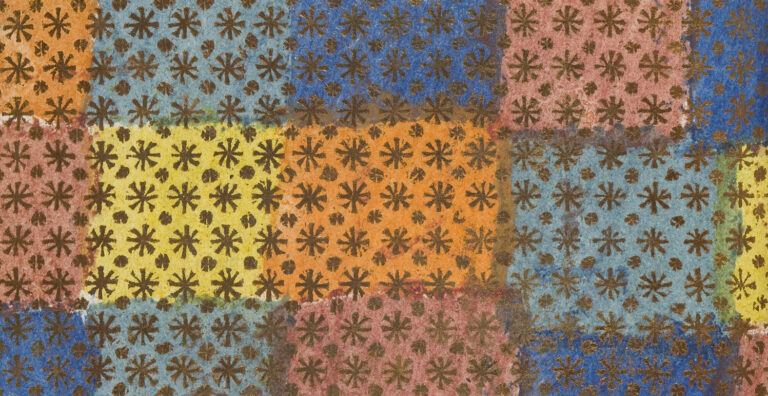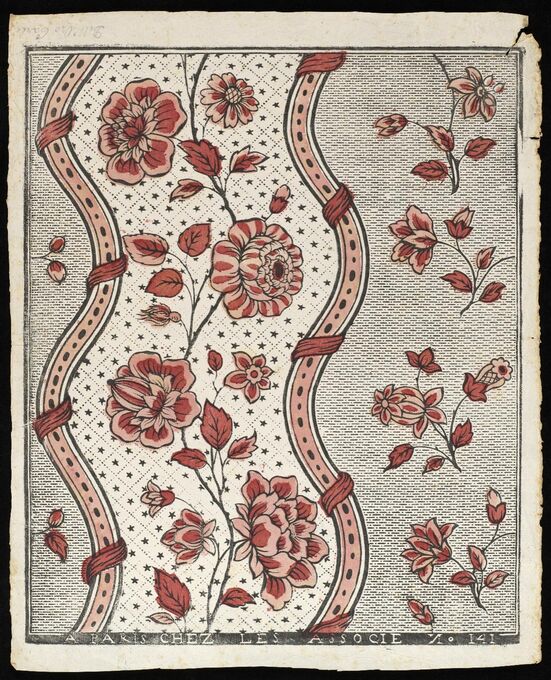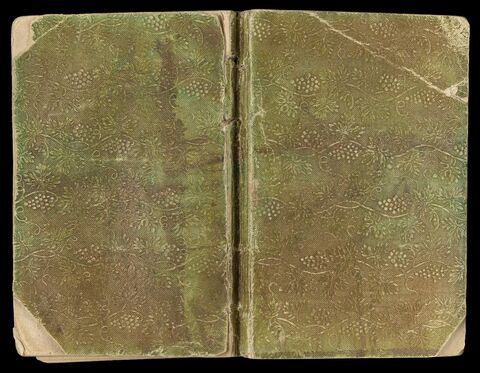Manufacture and Trade

Scroll to learn more about where decorated papers were produced and who made them.

Papiers Dominotés of France
The French decorated paper industry concentrated on block-printed papers, printed in strong designs with large patterns, in black, blue, or red ink, then coloured by hand or stencil.
This example is typical, made by Les Associes, one of the biggest firms, based in Paris.
Download a printable pdf of this decorated paper here.
|

Moravian Paste Paper
A distinctive style of paste paper, with cheerful patterns made with fingers or simple tools, was made in the workshops of the Moravian religious community in Herrnhut in Germany. It was used for book endpapers, and as covers for paper account books or sheet music. This tradition continues in Herrnhut today. Paste paper was not common in Britain, but for a short period in the 1760s it was made by a Moravian community in Fullneck in Yorkshire.
This example is from Fullneck, used as endpapers on a book printed in London.
Download a printable pdf of this decorated paper here.
|
“Dutch" Gilt Papers
Brocade papers came mostly from major manufacturing centres in Germany. Several of the largest firms were in Augsburg, which enjoyed the advantages of scale, and of cross-fertilisation of ideas and techniques across its related book and textile printing industries.
This sheet on the left is from the firm of Georg Reimund which operated in the 1740s and 50s. That on the right is not signed. Both are wrappers on Edinburgh legal theses, which have been bound together into a larger volume.
When brocade papers were imported into Britain they were described as “German”, but, inevitably, “Deutsch” was Anglicised into “Dutch”.
Use the zoom tool to explore the details of this decorated paper more closely.
|
||||||
| Object reference | Bdg.s.3/15-16 |
|---|
Distant Trades – North America
Papers from the big manufacturers were exported all over the world, turning up on books printed and bound as far away as Mexico.
In North America Isaiah Thomas, the entrepreneurial printer, newspaper editor, and bookseller, imported brocade papers from Germany to use as attractive wrappers on small books for children. This book with the original paper still in place is an incredibly rare survival.


